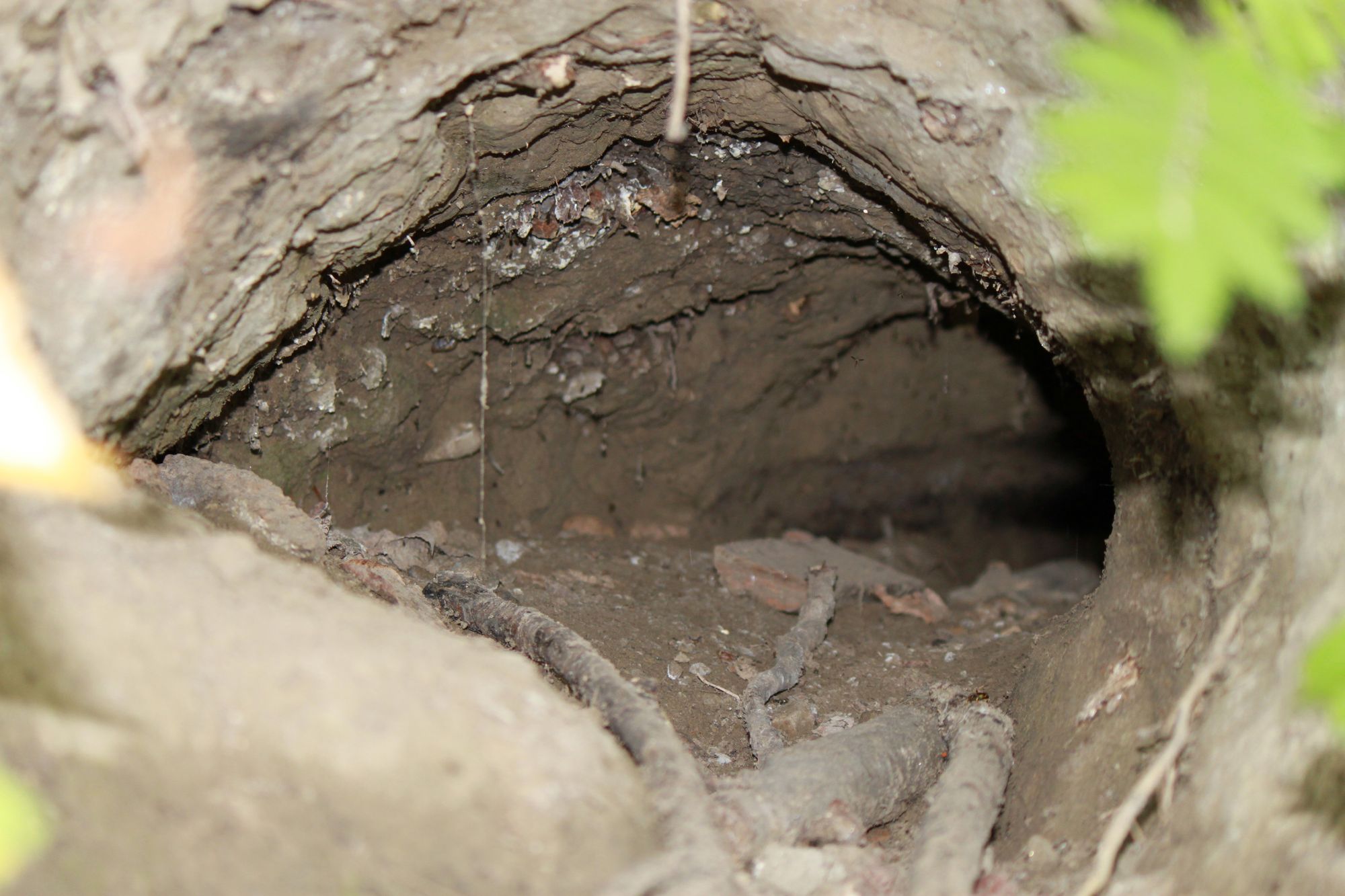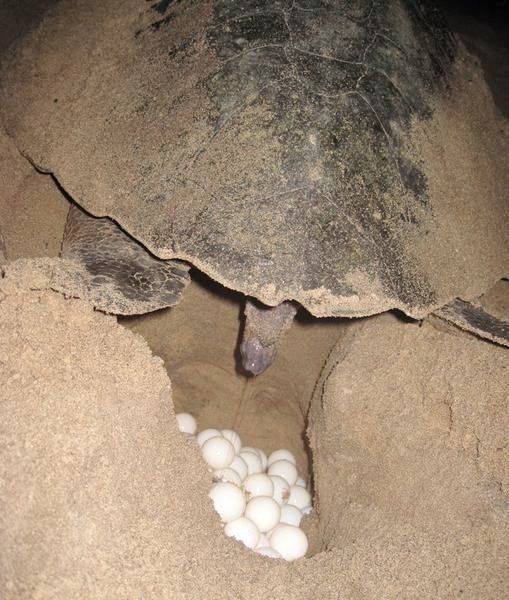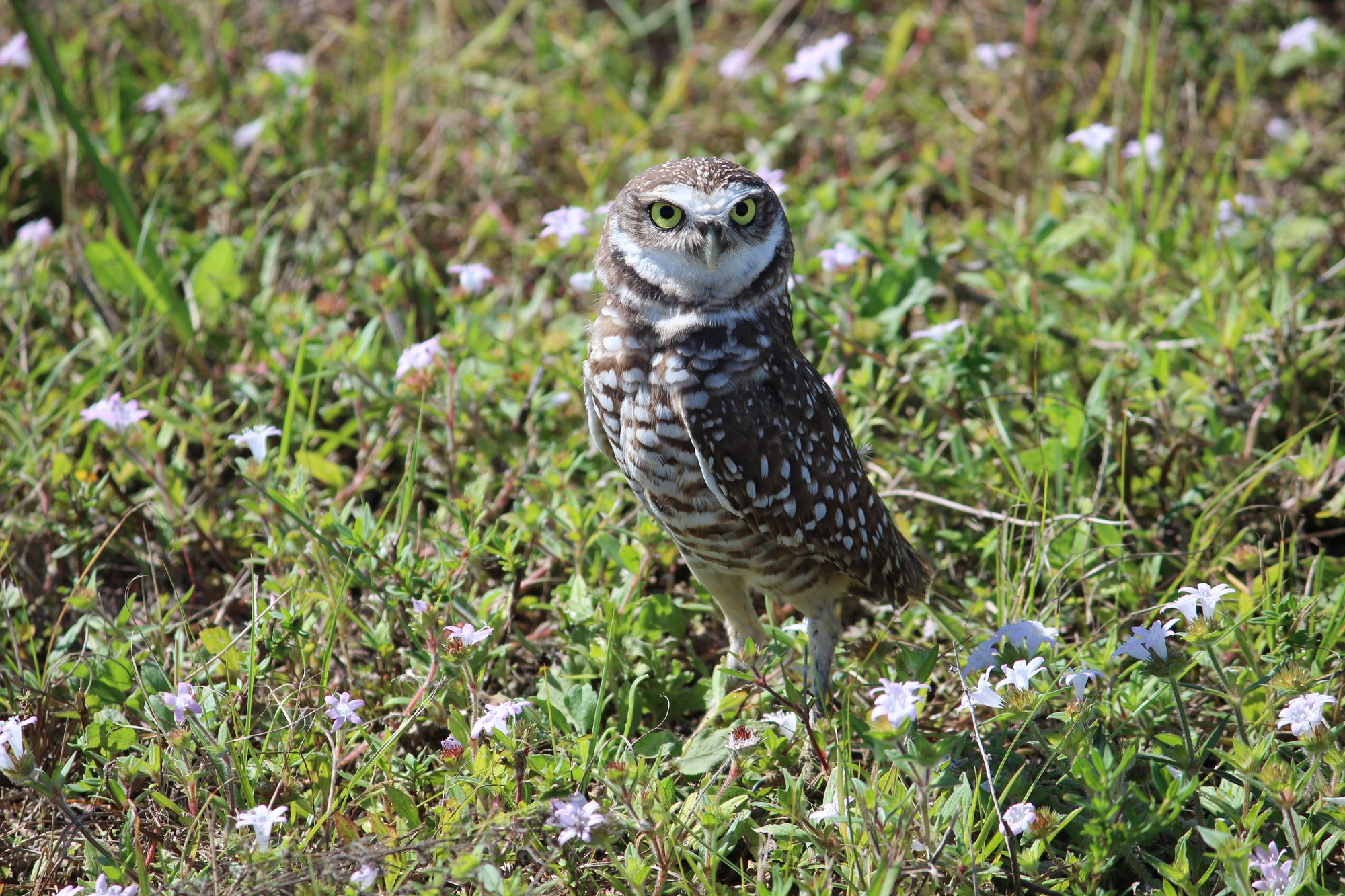
So far, our examination of the different types of wildlife and what happens to them in a hurricane has shown repeatedly how each has developed its own adaptations that make such a catastrophic event more survivable.
However, this time we’re going to look at some animals that either make or use burrows. Because of the nature of water to seek the lowest point, these are some of the most vulnerable organisms of all when it comes to hurricanes. I must warn you ahead of time that not all of the stories are happy ones this time.
Ground and Sea
As many of you know, much of my own field work has dealt with nesting sea turtles. Of course, the adults are out at sea, not on the beach, when a storm hits. We’ll take a look at their response in the near future. For now, we’re focused on their eggs.
Sea turtles are one of several examples of a group of organisms that returned to a marine environment after having come onto land. However, because they are reptiles, they must maintain more of a connection to the land than other such organisms, like marine mammals. The latter are able to give live birth in the water, but turtles must lay eggs on dry land.

Because their limbs have developed to maximize movement efficiency in the water, sea turtles have difficulty traveling far on land. They cannot lift themselves off the ground and must instead use their flippers to drag themselves. Thus, they don’t tend to look very far for a place to lay their eggs. They don’t have the option for somewhere very high or far away.
The same reason why sea turtles must lay their eggs on land is what makes their eggs so vulnerable to a hurricane: the eggs need to breathe (more accurately, they must be able to intake oxygen and expel carbon dioxide through the eggshell, which cannot be done underwater). Survival of sea turtle nests in such a case is usually down to chance, both in timing and severity. In Florida, sea turtles begin nesting in late April or early May and continue through August or September. It takes about 60 days for the eggs to hatch. Thus, the timing of a major storm or hurricane will determine how many active nests exist. Nests can be destroyed either through inundation (flooding) or erosion as waves sweep away the sand surrounding the nest.
For a major storm like Ian with huge storm surge, it is unlikely that any unhatched nests in Lee or Collier counties survived. That said, any nests that were laid in May, June, or even early July 2022 hatched out before the storm hit. Because sea turtles spread out their nesting and usually make multiple nests during a season, the likelihood of a complete wipeout from a single event decreases. Even with the storm, it was an excellent year for sea turtle nesting in Southwest Florida.
Ground and Air
After looking at an animal that both burrows and swims, let’s look a a different dichotomy, one that burrows and flies. That would be the burrowing owl, Athene cunicularia, a small bird found throughout large portions of North and South America. While it tends to borrow burrows dug by others (including prairie dogs and ground squirrels in some parts of its range), it can dig its own for nesting if a suitable existing burrow cannot be found.

The burrowing owl is a highly charismatic species, despite its smaller size, because of its behavior patterns. During their breeding season (February to July in Florida), they are primarily diurnal, active during the day, and thus more easily observed than the other nocturnal owl species. Locally to me, there are significant populations on both Marco Island and Cape Coral. The latter even has a ‘Ground Owl Day’ on February 2nd (since we don’t have groundhogs this far south).
The main difference between these owls and the shorebirds we discussed last time, is their home site fidelity. Many shorebirds are migratory, but burrowing owls (in Florida at least) are year-round residents and tend to stay closer to home. A quick jaunt inland isn’t a big deal for a shorebird, but it’s an extreme journey for a burrowing owl. However, they don’t stay in their burrows and hope. Instead, they find whatever shelter and high ground they can, either natural or artificial. That includes in garages and underneath the eaves of houses. Locally, we won’t know the exact impact until the annual census in June, but I suspect it will be minimal.
Nowhere to Hide
Probably the premier burrowing animal of Florida is the gopher tortoise, Gopherus polyphemus. Their burrows provide habitat for more than 350 different species, including the burrowing owls mentioned above. The threat from a hurricane for these animals varies greatly depending on where they live. Populations of gopher tortoises can be found both on coastal sand dunes and pine uplands. For the former, the main concern is storm surge and for the latter, flooding from rain.

Inland gopher tortoises have a bit more flexibility when it comes to avoiding these problems. While not particularly fast, they can walk to relatively higher ground. Even a few inches of elevation can make a huge difference in a mostly flat state like Florida. Coastal tortoises don’t have that luxury. Their burrows are on the higher ground. There isn’t anywhere ‘up’ for them to go. Many are on barrier islands, so they can’t go inland even if they were inclined to try (apparently gopher tortoises can float, though not easily and not for long).
The plight of these particular tortoises is almost as personal to me as the sea turtles. Around 10 years ago, I was still a graduate student at FGCU and the herpetology research lab I was a part of, under the direction of Professor Phil Allman, began monitoring the gopher tortoise population at Delnor-Wiggins Pass State Park in north Naples. I hadn’t thought about it much in recent years, but as I was researching for this post, I came across an article that heavily cites him and the continuing work there. The revelations therein broke my heart.
Mortality is a given for coastal gopher tortoises hit by hurricanes. Some burrows will flood and some individuals will get swept away. After Irma, the Delnor-Wiggins Pass tortoises experienced a drop from around 100 to around 70 individuals, but the population had since rebounded. Ian, however, was decimating. The level of storm surge it generated is enough to completely swamp a low-lying barrier island. After the cleanup, when they were able to get back there, they found a 90% mortality rate from Ian of that population of gopher tortoises. Similar devastation has been documented throughout Southwest Florida for coastal tortoises.
With no more than 10 individuals left, the prospects for such a population are incredibly bleak. Even in some locations with lower mortality, this was only achieved by all of the tortoises clustering in a single small area, evidenced by an increase in burrow density. Such dense packing can cause its own stressors on a group of animals. I suppose what really moved me about this example, though, is the fact that I knew these tortoises, even if only briefly. It almost felt like losing a family member. Then, when you wonder about all the different species that depend on gopher tortoise burrows, it can feel even worse.
Conclusions
This is the first example we’ve looked at where a hurricane can truly devastate a species in a way that feels similar to how it devastates us. What makes those coastal gopher tortoises different from the other wildlife we’ve mentioned so far?
For one thing, there are multiple natural vulnerability factors in play: slow speed, isolated location, and a lack of alternative refuge. In addition, we have been encroaching on their habitat for decades, squeezing them more and more. It’s an important thing to keep in mind: nature is resilient, but it’s not indestructible, and our actions can both increase and decrease the damage that rare disruptions like hurricanes can do.
Next time on ‘Winds of Change’, we’ll go even deeper, into the ocean itself, and start looking at hurricane effects on marine creatures.